

Catch Fish with
Mike Ladle
Information Page
SEA FISHING
For anyone unfamiliar with the site always check the FRESHWATER, SALTWATER and TACK-TICS pages. The Saltwater page now extends back as a record of over several years of (mostly) sea fishing and may be a useful guide as to when to fish. The Freshwater stuff is also up to date now. I keep adding to both. These pages are effectively my diary and the latest will usually be about fishing in the previous day or two. As you see I also add the odd piece from my friends and correspondents if I've not been doing much. The Tactics pages which are chiefly 'how I do it' plus a bit of science are also updated regularly and (I think) worth a read (the earlier ones are mostly tackle and 'how to do it' stuff).
Catching bass.
Choosing the tactics.
How do you decide what tackle and tactics you will use when you want to catch a bass? The truth is that it depends on when you are able to fish, where, on the coast you are able to go and what you enjoy doing. Last things first; I've been fishing for long enough to know that many anglers have strong 'method preferences'. There are certainly 'dyed-in-the-wool' fly, lure and bait anglers who, nine (or ten) times out of ten will stick to their favourite approach whatever conditions they are faced with. Some of my best pals are avid fly fishermen and of course they have become very good at what they do (certainly much better than me). Similarly, I know a few who love spinning so much that they are disinclined to try anything else. Even when things are not ideal for their favourite method they will make a decent fist of things and catch some fish. However, I suppose that the majority of us are a bit more flexible in our approach and will change tactics to suit time, place, conditions and what we feel like doing.
So, it seems that anglers include specialists and generalists. This is just like many animals - some species have a restricted diet and dominate when their chosen food is available (and struggle when it isn't); others make the best of whatever they can find and do OK even when times are hard. As I suggest the same applies to anglers - given ideal conditions for their approach the specialists will generally come out on top. However, when things are not quite perfect, the more adaptable generalist will be the most successful. Since bass anglers inevitably have to contend with a wide variety of tides, weather, seasons, etc. etc. it is probably best to be something of a 'Jack-of-all-trades'. Easy eh! But wait a minute - on any trip to the coast how are you to decide which of the available methods you should use? Is there a set of rules that will always guide you to the tactic which will produce the best catches?
Following my recent review of lures, and how we fish for bass, I tried to come up with a formula for success. It's not easy! The one thing that seems certain is that the most versatile lure is the 'weedless-soft-plastic'. These gadgets will catch bass under a vast range of conditions. Fished without added weight, they can be used almost at any time or in any place; dark/light, rocky/weedy, deep/shallow, clear/dirty, fast flow/slow flow, calm/rough. If, for some reason, you think that the fish may be further out or deeper down, the addition of a nose weight will give you those extra metres of distance or depth that occasionally make a difference.
So, why use anything but a 15cm weedless, plastic eel/fish of some description? In other words, are there any factors which might mean that you ought to be trying something different? The first thing to consider is preoccupation; do the bass have some sort of 'search image' for a particular type of prey or are they simply looking for something (anything) to eat?
The most obvious type of 'food-fixation' is when the fish are gorging themselves on very abundant (usually small) items. Seaweed fly maggots, marine woodlice, tiny sandeels, sprats and so on - any of these can be present in almost unbelievable numbers and the bass may well ignore anything which is larger or doesn't look or behave in the way they are expecting. Although this happens quite often it is rarely 100%. There will usually be one or two fish that fancy a steak while the others are guzzling burgers. So, even though to maximise your catch you may need to try and slavishly imitate the abundant item; it is often possible to induce a few bites by offering something that seems to be a bigger, tastier or easier meal. This is not always a 'second best option' because a chunky, conspicuous, slow moving item may well pick out a larger than average fish from the massed ranks of smaller specimens dedicated to eating the swarms of prey. Lets look at a few examples.
Firstly, to make the point about fish with a food fixation, an excerpt from "Operation Sea Angler" written forty years ago. My pal Harry and I were fishing side by side:- As dusk fell and the tide began to flood the bass again moved out and by mutual agreement we `gave it best'.... the twelve fish (we had) landed ranged from 4 to 10-pounds with a total weight of well over seventy pounds. The following morning we considered what had been learned from our success. Low water neaps and calm, clear conditions in late spring and summer cause brit to shoal up in very shallow water close to the shore. The bass, when they are preoccupied with these fish, are difficult to catch except on a `little fish' imitation. In fact, on this occasion, only one of the fish (the smallest) took a larger lure even though it was fished for an equal amount of time to the successful 'brit mimic' (the only small lure we had with us).
This fish was feeding on small sandeels, at distance, and took a small, silver, eel-like? metal lure.
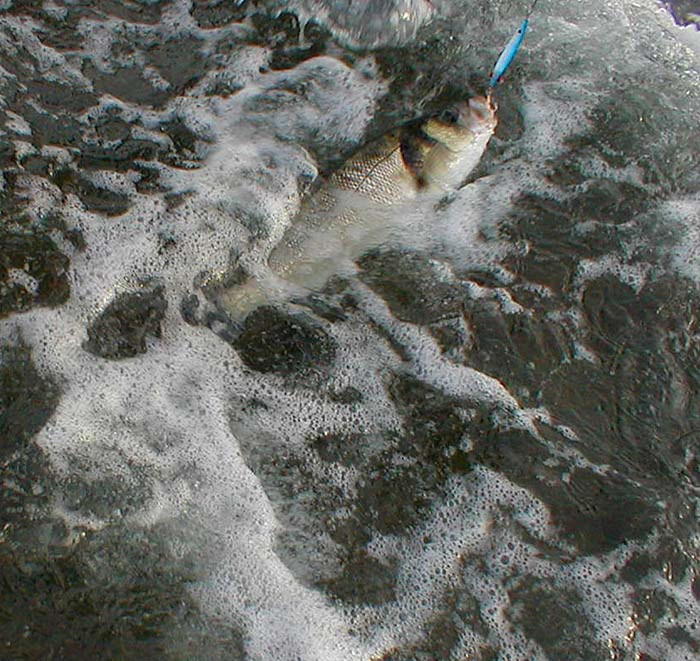
Both these sandeel feeders were returned alive.
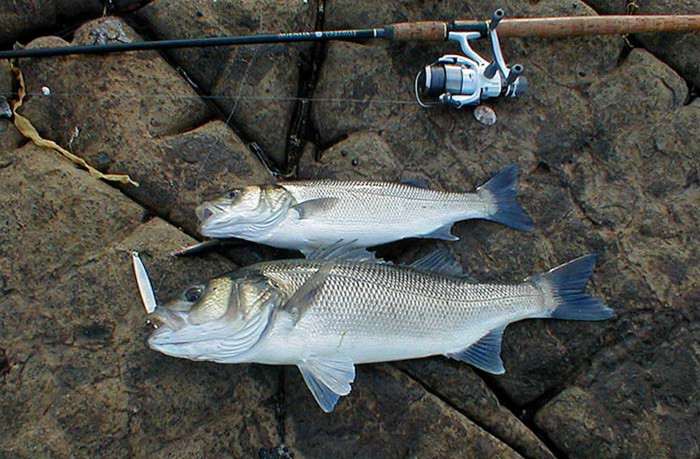
In contrast there have, since then, been a great many sessions when, although most of the bass were caught by 'matching the hatch' an exceptional fish or two were landed on 'the-odd-lure-out'. Countless occasions when schoolies were feeding madly on maggots and being caught one after another on tiny maggot flies have seen one or two much bigger fish take a larger plug, popper or soft plastic. I have also frequently wheedled a good fish or two from shoals obsessed with Idotea on a plug or (more often because of the drifting kelp) a big weedless softbait. Only last year, with the bass madly feeding on sprats, I was able to catch a number of the larger fish on a big Slandra. However, more fish are normally caught by closely imitating the abundant prey. So, it partly depends on whether you want quantity or quality - only you can decide.
A schoolie taken on a maggot fly while feeding on floating maggots.
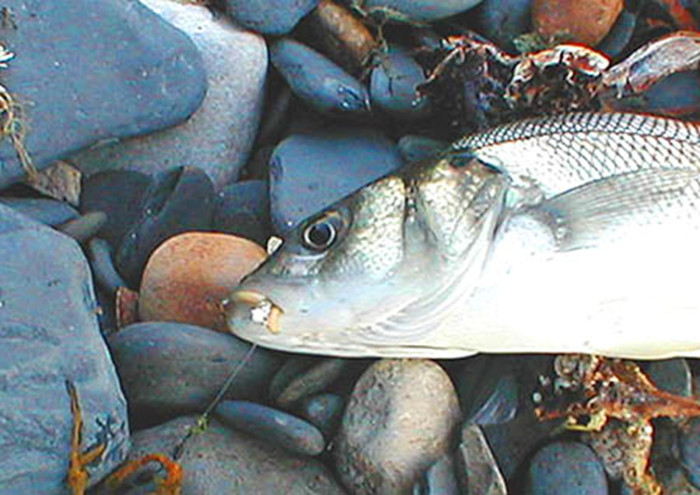
A better fish picked out from a shoal of maggot feeders on a Delta fly.
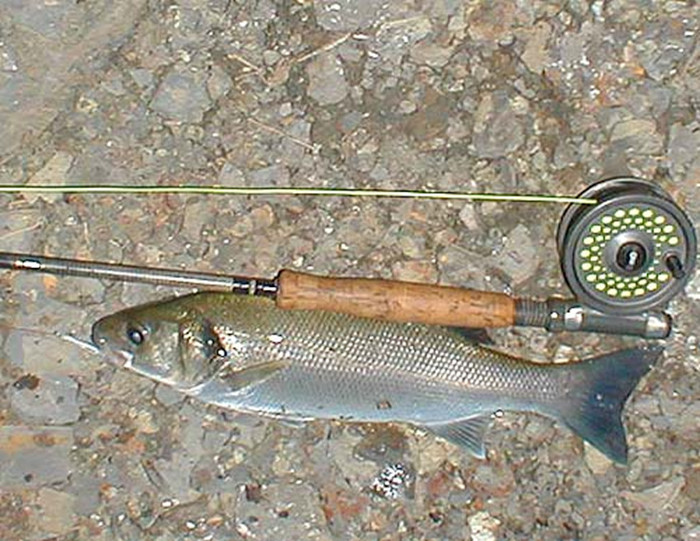
It seems to me that since the main differences in terms of search image are firstly SIZE, secondly SHAPE, thirdly SPEED and possibly in a poor fourth place, colour or external appearance. So, we will need need lures ranging from (say) 30mm fry up to 300mm mouthfuls for bass fishing. These could all be of the same type with a Slug-Go, Evo-Stix or similar type of tried-and-trusted, weedless front body and either a waggy or a wriggling tail. Bear in mind that broad wriggly tails and big paddles have more 'drag' than slimmer models and so can be fished really slowly. It should be possible to mount any of these lures with 'head-weights' of various sizes or densities, and ideally these should be designed to smoothly fit over the hook-eye/link and knot. You would then be able to fish with confidence, using the appropriate size and weight of lure (on appropriate fly or spinning gear) for all occasions.Q.E.D.
A typical handful of Idotea - the bass love them so much they become tricky to tempt.
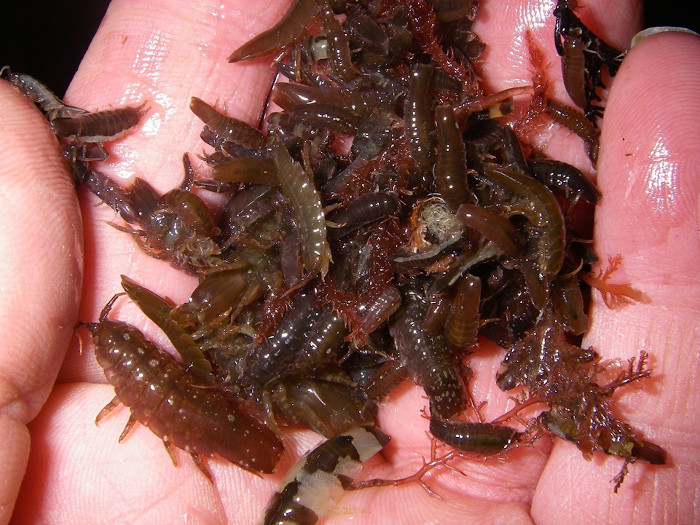
No monster but this Idotea feeder took a big weedless Slandra.
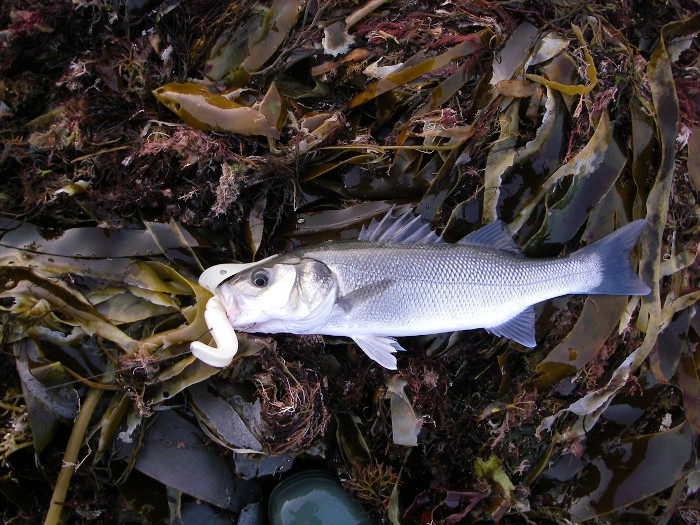
Summer sprats chased ashore on the shingle.
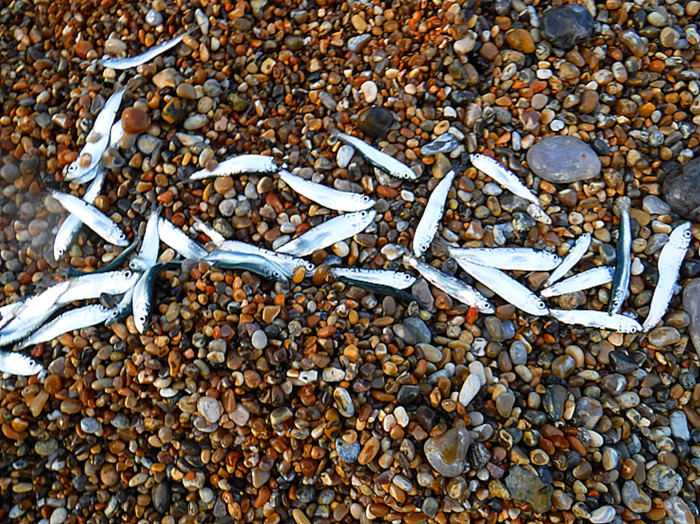
A nice bass selected from the sprat feeders by a weedless softbait.
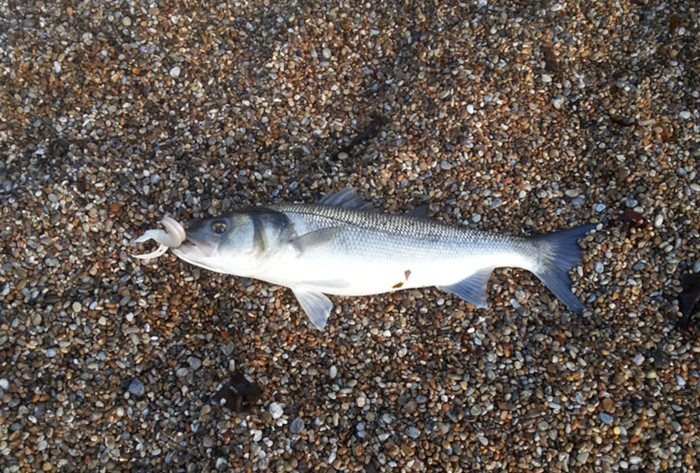
I suppose that, having written this, the thing to do now is for me to try a season (or what's left of it when I can go again) with only a box of weedless softbaits and a range of cone leads in my bag. Corona virus willing I may just do that. Wish me luck. However, I still have to consider the use of natural baits for bass so perhaps the lure trial can wait until 2021? Phew!
If you have any comments or questions about fish, methods, tactics or 'what have you.'get in touch with me by sending an E-MAIL to - docladle@hotmail.com
– PLEASE TELL YOUR TWITTER, FACEBOOK, EMAIL FRIENDS ABOUT THESE BOOKS.
NEW BOOK
"Fishing for Ghosts - Successful Mullet Angling"
written with David Rigden IT'S AVAILABLE FROM -ALSO THE NEW BOOK
“The Second Wave”
Written with Steve Pitts this is a SEQUEL TO THE BESTSELLER "Operation Sea Angler" IT'S AVAILABLE ON PAPER OR FOR YOUR KINDLE FROM -